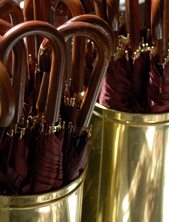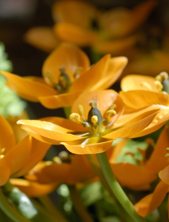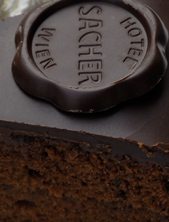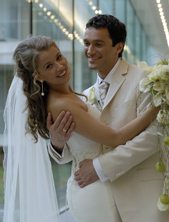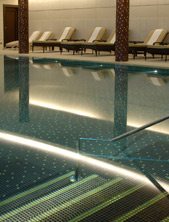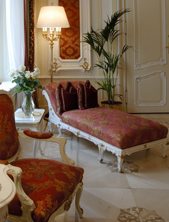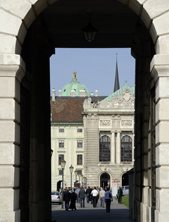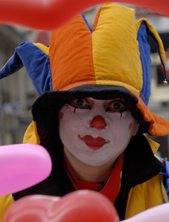Vienna where luxury can be bought, but history has been earned…
When the president of The Most Famous Hotels in the World asked me to visit his home town of Vienna, I was unprepared for the surprises that awaited me. This organisation carefully documents the history of famous hotels in the world over 50 years old. Those had better be 50 fascinating years if a hotel wishes to make the list of an elite group whose motto is “Luxury can be bought. History must be earned.”
Some people adore hotels others abhor them. As a travel photographer, I can average up to 150 nights a year in hotels, and I love them! However, I am especially fond of those that combine both luxury and history. Not surprisingly then, I freelance as an Associate Photographer for Famous Hotels, helping to build a pictorial history for posterity. This project currently lists 366 famous hotels in 77 countries around the globe and has published over 30 hotel history books.
My first task in Vienna was to work for the world famous Sacher hotel in order to capture “essence details”. Much to my delight, this included an encounter with the most delectable chocolate cake on the planet, the Sacher Torte, a treasure so precious to Vienna the recipe is kept in the hotel vault.
I also had the privilege of working for the five star legendary Imperial Hotel, another Vienna highlight. There my objective was to shoot an environmentally friendly press image. But who would have thought that this could involve fresh mountain spring water, balancing on a step ladder and challenging shots of a priceless, antique chandelier?
Then to take a side trip to Velden in Southern Austria to sample a unique Spa treatment at the newly renovated Hotel Schloss Velden, which changes in accordance with the phases of the moon, in order to shoot publicity images for their forthcoming wedding brochure.
Vienna is the capital of Austria, a German speaking landlocked country in Central Europe. The river Danube runs through the north of the city. Austria borders both Germany and the Czech Republic to the north, Slovakia and Hungary to the east, Slovenia and Italy to the south, and Switzerland and Liechtenstein to the west.
Thus, the landlocked Austria is an ideal launching pad for exploring numerous European countries. And curiously, like people who live on an island are known for particular traits, so are those who live in a country that is totally landlocked. I was puzzled when a local in Velden suggested that if we drove really fast we could be by the sea in a couple of hours. I had not even mentioned the sea, nor was I concerned about getting the chance to see it!
At my first stop, The Sacher Hotel, my room was extremely well appointed. A room with a view, and what a view! The room looked out right over the majestic Staatsoper, the state opera house and the famous Albertina. The rooms are so cosy and decked out with reproductions of fine art: a Picasso print on the bedroom wall and Miró prints in the bathroom. It’s said that the collection of art in this hotel is priceless.
The Sacher is world famous for that chocolate cake I fell in love with, the original Sachertorte, invented by Franz Sacher in 1832 for a historic dinner with Metternich in Vienna, Austria.
This chocolate cake’s top and lower base are separated by a thin layer of apricot jam and a generous coating of dark chocolate. It is traditionally served with fresh whipped cream.
The trademark for the “Original Sachertorte” was registered by the Hotel Sacher, The Sacher that was built in 1876 by the son of Franz Sacher. This chocolate cake is a serious business even today and there are leaflets and signs on delivery vans advising potential clients to beware of imitations. The cake and the truck were ideal essence details, perfect to photograph and the cake simply scrumptious to sample.
Historical hotels such as The Sacher have concierges who are true experts in their field. Mr Wolfgang Buchman the head concierge is without question a walking “what’s on” guide. He provided me with another “essence portrait”, together with the huge collection of umbrellas on guard should the fickle central European sky decide to change. I was lucky enough to capture them on camera with a rare element of sun.
Exotic flowers add a note of harmony throughout the hotel, and along with the chocolate cake, I fell in love with these carefully placed delicate beauties. Just follow the flowers into the hotel’s hideaways such as the historic Red Lounge and the adjacent Blue Bar, both reminiscent of a bygone age. You immediately feel the sensations of past eras and can almost eavesdrop on conversations that took place between hotel guests, aristocracy and diplomats.
Anna Sacher, the socialite, cigar smoking, daughter-in-law of the founder, ran the hotel from 1892 until her death in 1930. The Sacher became infamous among the rich and noble. Anna Sacher created her own cocktail and collected autographs of famous guests that stayed at the hotel. The tradition carries on even today and signatures are embroidered onto a tablecloth that now hangs in a glass showcase within the hotel.
Apparently they are now working on tablecloth number six. Carefully stitched into these precious cloths are the names of such famous guests as Andrea Bocelli, Montserrat Caballé, Elizabeth Taylor, Princess Caroline of Monaco, Hillary Clinton and the Dalai Lama.
Imagine how long the list is of famous guests if they need six tablecloths just for their autographs! One of my personal favourites is Novelist and screenplay writer Graham Greene who spent time at the Sacher hotel during the post war occupation. While in Vienna that he met the legendary spy Kim Philby, who would later be revealed as a Soviet double agent. At the Sacher Hotel, Green was inspired to put pen to paper and write the incredibly successful film script “The Third Man”. I wonder where Greene was when he wrote, “The great advantage of being a writer is that you can spy on people. You’re there, listening to every word, but part of you is observing. Everything is useful to a writer, you see – every scrap, even the longest and most boring of luncheon parties.”
With my photographic details safely downloaded onto my laptop, and a second security copy on an external hard drive, my assistant and I headed south to Schloss Velden, a five star hotel on the shores of the Woerth Lake. The hotel was once a privately owned castle and is now a hotel that has just undergone a 100 million-euro renovation. I thus left a European capital, where every square meter counts, and arrived in a place with such a lavish use of space that it took 6 minutes to walk from my room to breakfast.
As the hotel itself resembled a wedding cake, I was looking forward to carrying out wedding imagery in the Castle grounds. The casting for the models had been done with pdf’s of Z cards, where online between my studio in Spain and the hotel in Austria, we selected a bride and matched her to a potential groom.
On the day of the shoot it rained non-stop. The models, stylists and make up artists arrived with everything you could possibly need for a wedding: dresses, shoes, jewellery, suits, rings, flowers, bouquets. You name it, we had it. I love the way in both film and photography that you have to create a story, here a marriage, a online selection of two people to marry and in reality neither had ever whispered the big “ I do”. This alone was a challenge enough without the rain. Thankfully I had come prepared with full studio lighting.
If you ever have the chance to visit this hotel, don’t miss out on the spa. I had a two hour session in their immaculate spa commencing with a jasmine foot massage and an exfoliation with silk gloves followed by a nurturing full-body massage. All in tune with the current lunar cycle reflecting the new, full, waxing and waning cycles of the moon.
Wedding brochure complete it was now time to return to the capital.
The Imperial hotel in Vienna is one of the most elegant hotel establishments in the world with a rich history of Kings, Queens and distinguished guests ascending and descending its magnificent staircase while residing at the Imperial.
The night before we arrived the King and Queen of Jordan had been guests at this same hotel. The receptionist asked if we wanted to take the lift or walk up the staircase, I presumed she must have thought that we might have claustrophobia and I said no problem we will take the lift. Over dinner I discovered that the thing to do when staying at the Imperial is to follow the footsteps of all Kings, Queens and dignitaries and walk up their historic staircase. Now tripod and camera free, I took the staircase just for historic kicks.
My brief at the Imperial was to shoot an interior shot taken in Suite 104 of the butler cleaning the chandelier with pure spring water from the Austrian mountains. The spray of the spring water must be visible, the butler visibly enjoying his work and catch lights on the solid crystal of the chandelier.
I only had a two-hour window to shoot the shot and at 6pm I knew that I only had the very last glimpses of daylight. The art director provided me with one stepladder and the butler with another. The ceiling must have been over five meters high with the chandelier at four meters, the butler at three meters and myself at two meters.
My assistant set up the lighting, I fully extended the tripod to two meters and we shot the images directly into my laptop. The butler didn’t speak a word of English and I don’t speak more than six words of German. He had to keep as still as possible on the ladder, but he also had to coordinate the time of the spray and smile in synchronisation with my shutter speed.
Apparently four other photographers had tried to capture this image and failed, mainly due to the reflective nature of the chandelier. I don’t want to bore you with all the technical details but two hours and 65 images later we had it on disc and the next morning it was published in the press.
If you do get a thrill on the technical details here we go:
Technical Data
Shot using a Nikon D200, 400, ISO Focal length 57mm, shutter speed 1/20 at f4.2 and the face of the butler was pin sharp at 100%.
With all this Photography was there time to step out in Vienna?
Yes there was and here are my recommendations.
Vienna’s has had a rich and varied History, Its finest hour was during the 16th century when under the Hasburg dynasty Vienna became not only the capital of the Roman Empire. It also ruled over Spain from 1516-1700 during the Habsburg rule mainly under King Charles the first and King Philip the second when Spain reached the zenith of its influence and power.
Hasburg Spain was, for a time, the world’s greatest power, ruling central Europe, with colonies in the Americans and the Philippines named after the Spanish King Philip. The Hasburg complex will provide you with deja vu reminders of architectural similarities from the Hapsburg palace buildings in Vienna, Madrid’s Plaza Mayor, with its grey slate towers and red its ornate facade, and the majestically El Escorial Palace, which were also constructed during the period of the Hasburg rule.
Another curiosity is that the Spanish thoroughbred horse originates from Austria and the Spanish riding school in Vienna is therefore not to be missed.
Mozart’s House in Vienna at Domgasse 5, is beautifully conserved and open to the public daily from 10am to 7pm.
There are several manicured public parks such as the Stadtpark, with a statue to Strauss, and Burggarten Park, with a staute to Mozart, with a delightful treble in flowers below him.
Vienna is indeed an amazing cultural centre for the arts, music and fine cuisine. I would highly recommend a visit to the Albertina for art lovers The Albertina owes its name to its founder, the passionate art lover and collector Duke Albert of Saxe-Teschen (1738-1822). It has one of the finest and most valuable graphic art collections in the world, including works by Rubens, Leonardo and Michelangelo. It also houses a superb collection of architectural drawings and photographic works.
The centre of Vienna is so beautifully preserved, not a thing out of place. Here you will find pedestrian streets such as the famous Karntnerstrasse with traditional gifts and performing street aritists, colourful glove shops and all the mayor luxury brands such as Tiffanies, Bally, Burberrys Armani, and chic outlet boutiques.
This is indeed café society. The Café Central is worth a visit is on the corner of Herrengasse and has a papier-mache statue to the poet Peter Altenberg who spent much of his time in Viennese coffee shops.
St Peters Cathedral has an amazing collection of colourful mosaic tiles on its roof. It’s very near the designer stores which made me wonder if anyone had ever nipped in to confess maxing out on the plastic? St Charles’s church is another architectural gem, well worth a visit and a fine example of Baroque architecture.
A visit to the Prater fairground. Where you will find one of the most famous landmarks of the city, the Ferris wheel, built in 1896 by an English engineer Walter basset. This same Ferris wheel was immortalised by Graham Greene in his Oscar winning, legendary movie “The Third man”.
The State Opera House or the Staasoper, as its locally known, opened to the public in 1869 and was build in Neo- renaissance style It was unfortunately bombed during the war and reopened in 1955 with a performance of Beethoven’s Fidelio. Even if classical music doesn’t thrill you, this is indeed an architectural masterpiece. Each year on the Thursday before Ash Wednesday it hosts the opera ball and here all that you ever wanted to visualize about the Viennese waltz can be experienced in monochrome before your very eyes with women in white evening gowns and gentleman in their appropriate black attire.
My final recommendation and the most essential tip for any visitor to Vienna, is to sample the most delectable chocolate cake on the planet, the one and only Sachertorte. Its readily available to take home as a gift, extend your the Viennese experience by sharing the Sachertorte with your friends and family back home.
My next destination with famous hotels will take me to the Ukraine, to photograph the five star Premier Palace Hotel in Kiev.


